This report covers:
- Bullet size
- Loading the magazine
- First test — 255-grain Hollowpoints
- Feel of the rifle
- Discharge sound
- Second fill
- Mr. Hollowpoint 305-grain
- Mr. Hollowpoint 300-grain .458
- Trigger pull
- Summary
Today we look at the velocity of the new .457 Benjamin Bulldog. There are some surprises coming that may not be that surprising.
I took the Bulldog over to AirForce. They have a 100-yard range where I can shoot into the ground safely, and with a gun this powerful, I felt I had to do that. I watched Tyler Patner’s test and I sort of knew what to expect.
Bullet size
Let’s get something straight. This rifle has a 0.457-inch bore. Bullets for it have to be 0.457 to 0.459-inches in diameter or they won’t perform well. Those 0.452-inch bullets that are made for lower-powered big bores, or the oddly sized 0.454 bullets, will not work well in this rifle.
I had several different weights of Mr. Hollowpoint bullets on hand and they all measure 0.457 to 0.458. However, because they are hollowpoints and because the Bulldog has a length restriction due to the magazine, I could only shoot three of the different ones I had.
Loading the magazine
I didn’t care for this gravity-fed magazine when I first saw it. Now that I have used it I know several reasons why.
First, the manual tells you to open the bolt with the side lever and leave the lever back so the bolt is out of the way. Then insert the clip into the receiver as far down as it will go. Then load a bullet into the clip nose-first. That didn’t work for me. When I tried to load the bullet nose-first it flipped around as it was going into the clip and ended up standing on its base. I suppose with practice I could get better at this, but to have to practice how to load is something I don’t need in a hunting rifle.
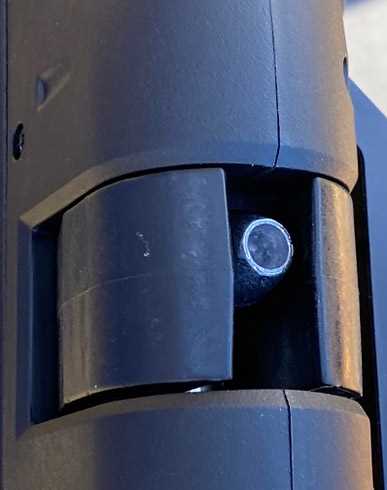
When I tried loading a bullet into the clip nose-first it flipped on me like this.
I found that setting the bullet flat on top of the clip and pushing down on the back of the bullet worked best for me. But that was not the end of my feeding problems. When the bolt went forward on the last bullet it grabbed the base of the bullet and flipped it up. It looks a lot like the last picture only this time it happened when I was trying to feed the bullet into the breech with the sidelever.
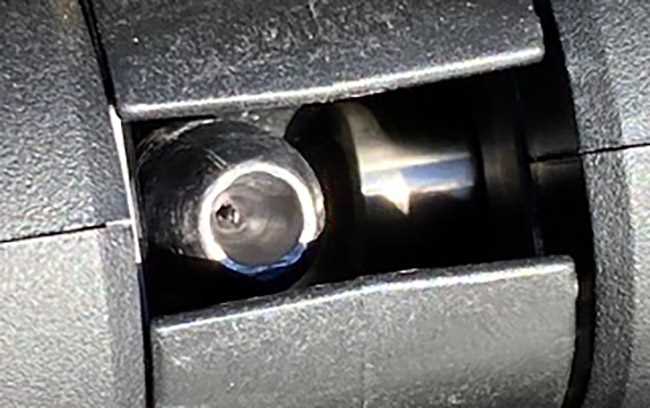
This time the bolt flipped the bullet. I took this shot looking down into the clip so you can see where the end of the bolt has grabbed the base of the bullet and flipped it up.
And one time the bolt flipped the bullet completely around backwards. That’s a lot of feeding trouble for a repeater to have. Give me a single shot any day!
First test — 255-grain Hollowpoints
I filled the rifle to 3,000 psi and tested it first with a 255-grain hollowpoint from Mr. Hollowpoint.
Shot……Velocity……Energy
1………….816.……….377.12
2………….798……….360.66
3………….767……….333.19
That is a straight linear velocity drop — exactly what Tyler recorded. At the end of the three shots the pressure remaining in the tank read 2,300 psi on the onboard gauge.
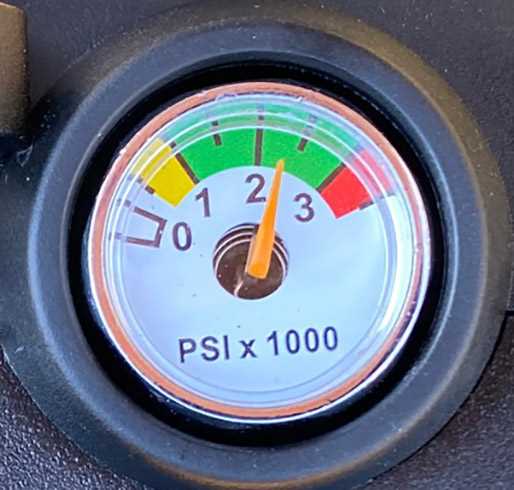
After firing three shots from the Bulldog this is where the onboard gauge registered. I read that as around 2,300 psi.
So the big question at this point is, what happens on shot number four? I took it and this is what I saw.
Shot……Velocity……Energy
4………….743……….312.66
That’s not a bad velocity, though I wouldn’t try it when shooting a group at 50 yards. But for a finishing shot to dispatch and animal, it works. The onboard pressure read 2,000 psi after shot four.
Feel of the rifle
Despite the weight of this Bulldog, the recoil is pretty brisk. And it’s only going to increase as the bullet weights increase.
The bullets do move around inside the clip, but they don’t rattle, as I feared. They will not alert animals when you are stalking.
Discharge sound
I noticed that Tyler Patner recorded some shot sounds when he tested his Bulldog. He was shooting indoors when he recorded them and I was outdoors, so my sound should be a little quieter because there isn’t as much to reflect the sound. The microphone was about 4 feet to the right of the muzzle and even with its end.
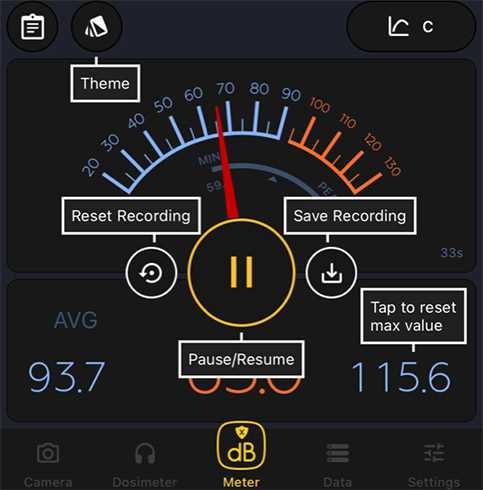
This is the loudest sound I have ever recorded from an air rifle. It’s as sharp as a .22 rimfire blast and it seems much louder because it lasts much longer.
I recorded that on the first shot after a fill. But as I shot I couldn’t tell that the rifle got any quieter as the shots piled up.
Second fill
I made a mistake on my second fill because my carbon fiber tank’s gauge is hazy and difficult to read. I over-filled the Bulldog by 500 psi.
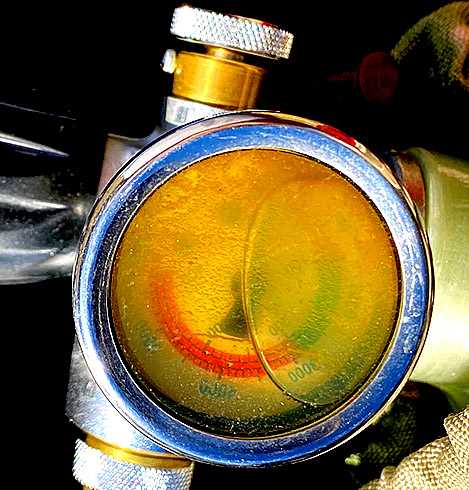
I overfilled because I couldn’t read the tank gauge that well. Time for BB to get a new gauge.
That overfill is going to have an impact on the next shot string. I wouldn’t do this intentionally, but since I did it, we might as well see the results.
Mr. Hollowpoint 305-grain
The next bullet was the 305-grain from Mr. Hollowpoint. Because of the overfill I expected this string to be different.
Shot……Velocity……Energy
1………….780……….412.14
2………….785……….417.44
3………….777……….408.98
All three shots are close together. So I fired a fourth shot to see what I might get.
Shot……Velocity……Energy
4………….746……….376.99
As expected this string was much tighter because of the extra air. But this is not what you should do. A deer dies just as fast from a hollowpoint hitting with 300 foot-pounds as it does from the same bullet hitting at 500 foot-pounds. Big bore airguns don’t kill with energy. They kill by the loss of blood.
Also, shot number 4 is still behind shots one through three. It is more powerful, but I think you can see that it’s separate from the first three.
Mr. Hollowpoint 300-grain .458
The last bullet I tested was a Mr. Hollowpoint 300 grain that was 0.458-inches in diameter. You will something interesting with this one.
Shot……Velocity……Energy
1………….762……….386.89
2………….740……….364.87
3………….714……….339.68
It seems the larger diameter bullet slows the bullet, doesn’t it? I guess this shows the Bulldog barrel is a real tight .457.
The cover for the fill nipple is too hard to get off so I removed it (with the help of my Swiss Army knife) and left it off for the test. That was a tough spot on the .357 Bulldog too, as I recall.
Trigger pull
The Bulldog trigger is two stage. On the test rifle stage one pulls with 9 ounces of effort and stage two with 3 pounds 10 ounces. Stage two is crisp.
Summary
That’s where we are so far. Reader Roman Greco want to see how it does against my cardboard mulch trap and so do I, so that will be in the first accuracy test that’s coming next.
The .457 Bulldog is a big bore airguns in all respects. It’s powerful, loud and kicks like a bear! I have no doubt it can do what it was designed to do. And looking into that will be what this series is all about.


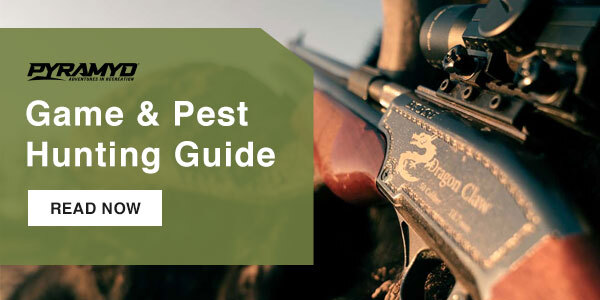
B.B.,
That gravity fed trough needs a serious rethink and most likely a redesign. Why make it detachable in the first place if you can’t put it in loaded? The harmonica clip would look better and be easier to feed.
Siraniko
B.B.
Does than mean that you are going to go hunt with it?
-Y
Yogi,
Probably not.
BB
Well how about seeing if it can blow candles out from across the room when dry fired?
If it was not designed to hunt with, or blow candles out with, what was it designed for?
-Y
Yogi
Blowing plastic army men over at 5 or so feet maybe???
Guess I should try that with my .50 caliber Wingshot ll. But maybe not. It makes probably half the energy of the .457 Bulldog. But you never know.
B.B.,
With those MV being so tight it won’t be the velocity delta that makes this rifle uninteresting!
Is the discoloration the gauge bezel lens or the fluid?
If there is a removable plug in the gauge body you can drain the discolored fluid and replace it with medical grade Glycerine from a pharmacy. Leave a small bubble of air to keep the plug from blowing out with temperature fluctuations.
shootski
shootski,
I later discovered that setting the gauge in direct sunlight got rid of much of that discoloration.
BB
B.B.,
Thanks for that information.
Never got that color just a fuzzy white on one gauge.
It also is the only gauge that has ever shown signs of rust on the indicator. After seeing your photograph i wonder if it was really rust now!
After the drain and lens removal to clean the indicator that gauge has never had another problem.
shootski
BB,
I noticed you did not use any of the Benjamin Bulldog bullets (BBB?). Maybe with all of the lead up front you will not have that flipping problem. I have to agree with Shootski in that I am quite impressed by how tight those velocities are. I have to agree with you that I think this would be a better air rifle if it was a single shot.
I have a gravity fed magazine for my Maximus. The manufacturer says not to use the JSB RS as it likes to flip around. It does.
I am not going to list the grammatical errors. You need a proofreader on this one.
Just watched Tyler’s review. Either he did not have a flip problem with that clip and the solid bullets or he was not going to talk about the failings of this air rifle. I hope he comments today concerning this.
Didn’t have any feeding issues with mine. I could see that being an issue with shorter rounds though, but I didn’t experience that myself….outside of round balls, but they shot horribly and the mag isn’t designed for them.
I should also note that I abandoned the recommended way of loading the mag. Loading it off of the gun as I show in the video was a lot less hassle for me than pushing them into the mag from the top. Your mileage may vary of course.
Tyler you and BB need to get together on the Bulldog mags.
BB,
As is, the velocity is reasonably consistent for 3 shots but by the way the 4th shot drops I think it’s teetering on the edge of being air-starved.
If I had the .457 Benjamin Bulldog I’d change the reservoir to a regulated 4500 psi bottle that fed a large plenum.
You mentioned that the muzzle blast was long, wonder if that is a valve timing thing. When tuning the Impact you start with no restriction on the valve and once you have the reg and hammer dialed in you adjust the valve dwell (mostly) by ear. You can hear the change in the muzzle blast as you reduce the wasted air. Don’t know if it is possible on the Bulldog.
I’m a bit surprised at the sticker price on the .457. Kinda looks like a PPPCP with a big bore. I would have thought $500 – $600 because of a limited market but $1100 sounds pretty steep. I guess that power sells and people are willing to pay for bragging rights. Still, there are some 800 fpe PCPs on the market that (at casual glance) seem to be a better value airgun for the price.
Just my uninformed opinion as big bores are not my thing.
Cheers,
Hank
Vana2,
“As is, the velocity is reasonably consistent for 3 shots but by the way the 4th shot drops I think it’s teetering on the edge of being air-starved.” Usually a 50 FPS change in MV (muzzle velocity) will not cause vertical dispersion of POI (Point Of Impact) until you are well beyond usable range. I was tempted to state a distance but given the wide range of KE (Kinetic Energy) of Big Bore systems that would be grossly misleading.
Normally a typical balanced valve Big Bore will VENT the remaining air charge when it is “air starved” because the hammer/striker spring will hold the valve open after the designed/tuned number of shots.
Like with most shooting it takes experience to truly get understanding of what is actually significant and what is not.
Airgun, Blow Gun, black powder, Long Bow, and Sling are in my opinion the most challenging for folks to master.
They also typically make the best son’s (daughter’s) of Cush…
Nimrods all!
FOREVER
shootski
Hank
For sure a regulated 4500 psi bottle.
It’s just beyond me why that does not happen.
Only thing I can think of the regulated bottle might restrict the mass of air flow that is needed for a big bore.
Maybe nobody builds a regulator for a big bore air supply yet.
Just speculating. Maybe somebody does. I haven’t looked into it.
GF1,
The valve in the Bulldog seems to be doing OK. If the regulated 4500 psi bottle was dropped to 3000 psi working pressure tand fed into a large plenum that wold eliminate air flow concerns.
There are a couple of big bores on the market but I don’t know if they are regulated.
The factory stock .35 Impact MK3 get about 45 shots at 150 fpe from a 250 bar, 580 cc bottle. Don’t know what head-room it has on the reg or if that model is already tricked out to the max. Know that my .22 MK2 was 33 fpe stock (100 plus shots on a fill) and easily hits 50 fpe (my current tune) and guys are getting close to 90 fpe with maxed out regs. Don’t know if the .35 has extra power available.
Hank
Gunfun1,
He does exist…Dang! NOT Santa! We All know he exists. I’m talking about THIS: http://www.airtanksforsale.com/din300regulated.jpg
Lol! I have debated about buying one for years but since I Cascade Fill from two 4,500PSI Carbon Fiber cylinders at the range and a 4,500PSI Guppy in the field I can’t bring myself to spend the coins when it really won’t do very much for my Big Bore accuracy. I also don’t see it working well (if at all) for cascaded filling.
shootski
Shootski
What I was talking about is a 4500 psi bottle with a built in regulator like the Gauntlet 2 uses. I wonder how that would do on something like the Bulldog.
Gunfun1,
I kind of suspected you meant an on board regulator. I wanted to show the size of regulators that can handle that level of high pressure and amount of drop. I laugh at the small gauges on some of the onboard systems that are not even rated for first level precision measuring; how will a shooter know what is happening with that? The Bulldog certainly could have internal regulators to step down pressure but without increasing the air reservoir volume how many shots will it lose to the regulator(s) hogging space formerly filled with compressed air? I just can’t see making this Bulldog.457 into an “efficient air sipper” for plinking???
Just flat out makes no sense to me.
shootski
Shootski
No way make the Bulldog into a plinker. But it might be nice to get 2 or 3 more shots with a more consistent velocity across say 6 or 7 shots.
And of course if the Bulldog was designed with a regulator I’m thinking they would of increased the air resivor volume and fill pressure. I believe that would keep the gun making good power and shot count with consistency. I thought that is what a regulated air gun was suppose to do anyway.
The mold for the Ruger Old Army BP pistol mikes at .4572. They should be close. Its a 220 gr. RN bullet.
Mike
This is a repost of my response to Big Iron from Friday’s blog:
“Big Iron,
From my experience with casting (no real expert) depending on the bullet mold steel , brass or that other metal; they will usually drop a bit larger than nominal size or the cold mold miked size.
From what B.B. says in Part 2 about the Bulldog.457 i would be surprised if your mold would cast an accurate bullet for the Dog. That said, you have the mold and all it would take is some Lead and some work to find out. For someone with a new Bulldog.457 it might be best to sample the commercial bullets to get an idea of what their barrel likes before dropping some coin on a bullet mold.”
I think it is an important bit of info for new Bulldog.457 owners who might also be new to the Big Bore experience.
Maybe Big Iron can get the pot and his bullet mold hot and send B.B. a couple of dead soft Lead bullets to try!
shootski
Good idea. Its still cold here and I always cast bullets outside, I’ll cast a few the next time I’m at it. BB said the bore may be tight so they could work. BTW, the mold is aluminum.
Mike
Big Iron,
Aka: that other metal. I have ever had any luck with Aluminum Alloy molds.
No clue why either.
shootski
Had to share my happiness,
A few years back, I purchased a pair of Hy-Score 813s–Diana 23.
One was missing the rear sight (put in storage). The other one has the rear sight plus a peep rail. Went this weekend to rummage through the storage room and found this forgotten little gem. Brought it home, installed the rear sight from the other rifle and put a peep on that one. Dropped a few drops of oil and now I have two working little 813’s.
Yeahhhhh!!!!